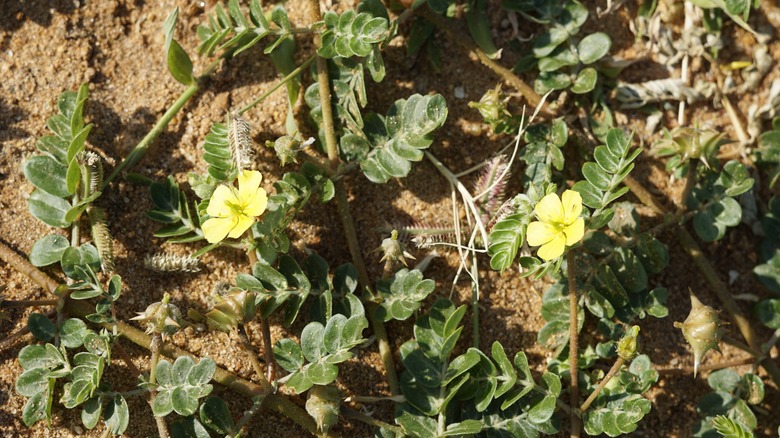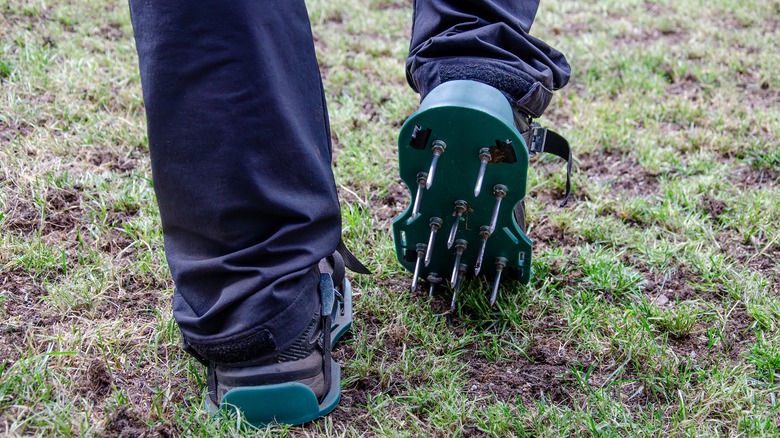Why Goathead Weeds Are Taking Over Your Lawn (& What To Do About It)
If you've noticed sharp, spiky little burrs that make it impossible to walk barefoot on your lawn, you're probably dealing with puncturevine (Tribulus terrestris), which is more commonly called goathead weed. These tough, invasive plants can grow in both dry, compacted soil and moist, rich soils, making them a common nuisance in many lawns and gardens. Their seeds (those dreaded burrs) can easily attach to shoes, tires, and even pet fur, spreading rapidly and establishing new patches of weeds all over your yard. The good news is that improving your soil and lawn health can both get rid of and prevent them.
One of the most likely reasons that goathead weeds are popping up in your lawn is because of the soil conditions. Puncturevine does well in compacted, dry soils where grass and other desirable plants struggle to grow, so there is no competition. If your lawn is heavily trafficked or hasn't been aerated in a while, the soil can become compacted, creating the perfect environment for these weeds to take root. The more compacted the soil, the harder it is for your grass to compete with aggressive weeds like goathead.
Additionally, stressed lawns — whether due to poor watering habits, neglect, or improper mowing — create weak spots where weeds can easily establish themselves. Goathead weeds are opportunistic; they exploit any bare patches in your lawn, sending out their long, creeping stems and producing those infamous and painful burrs. The seeds can remain viable in the soil for years, meaning even after one successful invasion, you could be dealing with them for seasons to come unless you take proactive measures. So let's look at how to get puncturevine out of your lawn.
What you can do about goathead weeds?
To effectively manage and prevent goathead weeds from taking over your lawn, the first step is to improve your soil health. Since compacted soil is a breeding ground for these weeds, aerating your lawn is essential. Aerating helps break up compacted soil, allowing water, nutrients, and oxygen to reach grass roots more effectively. This makes your turf healthier and better able to compete with weeds. You can rent an aerator or call the pros to help aerate your lawn for you.
Next, focus on keeping your lawn healthy to crowd out potential invaders. Water deeply but infrequently to promote deep root growth. The denser and healthier your grass, the harder it will be for goathead weeds to establish. That said, if they are established, mowing won't help since they grow too low to the ground.
For areas already overrun by goathead, manual removal is key. Cultivating the soil through rototilling or hoeing can be highly effective in eliminating existing plants. Be sure to remove any remaining burrs before they can germinate into new plants. You might also want to use mulch in garden beds or apply a pre-emergent herbicide in early spring to prevent seeds from sprouting.

